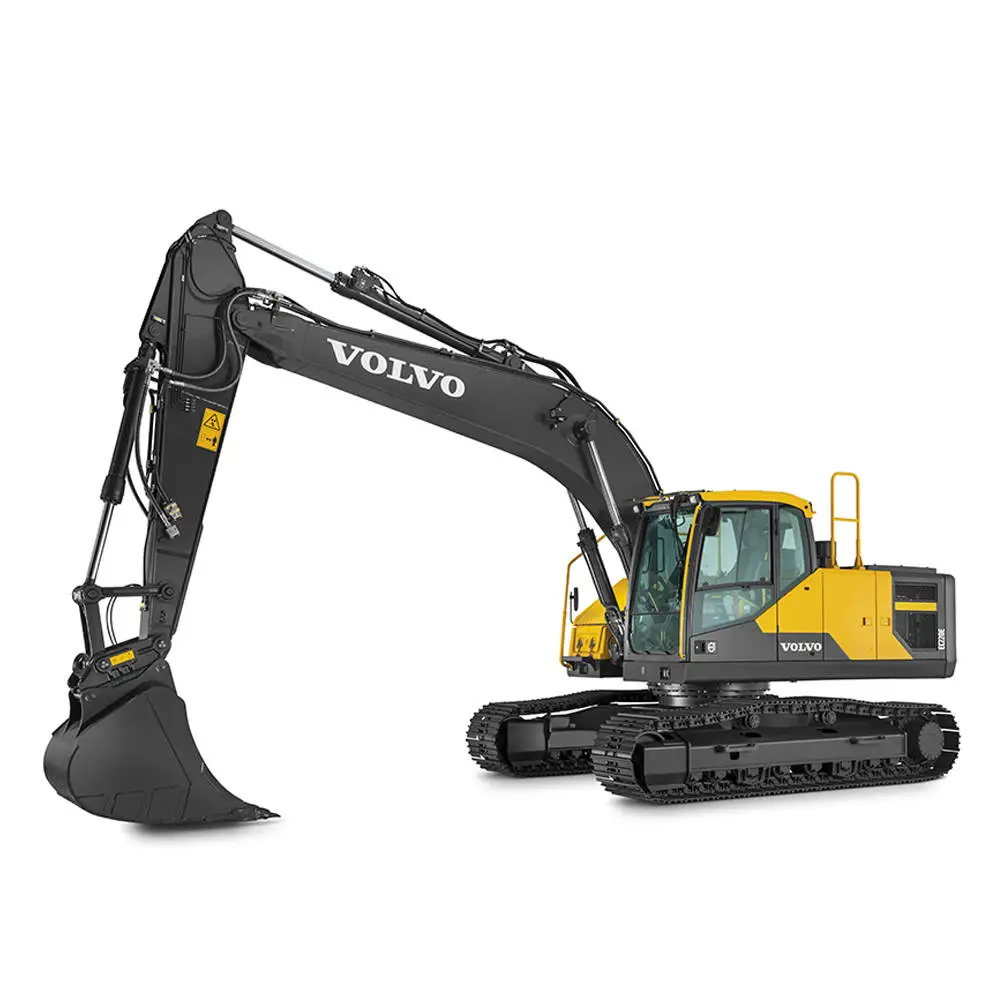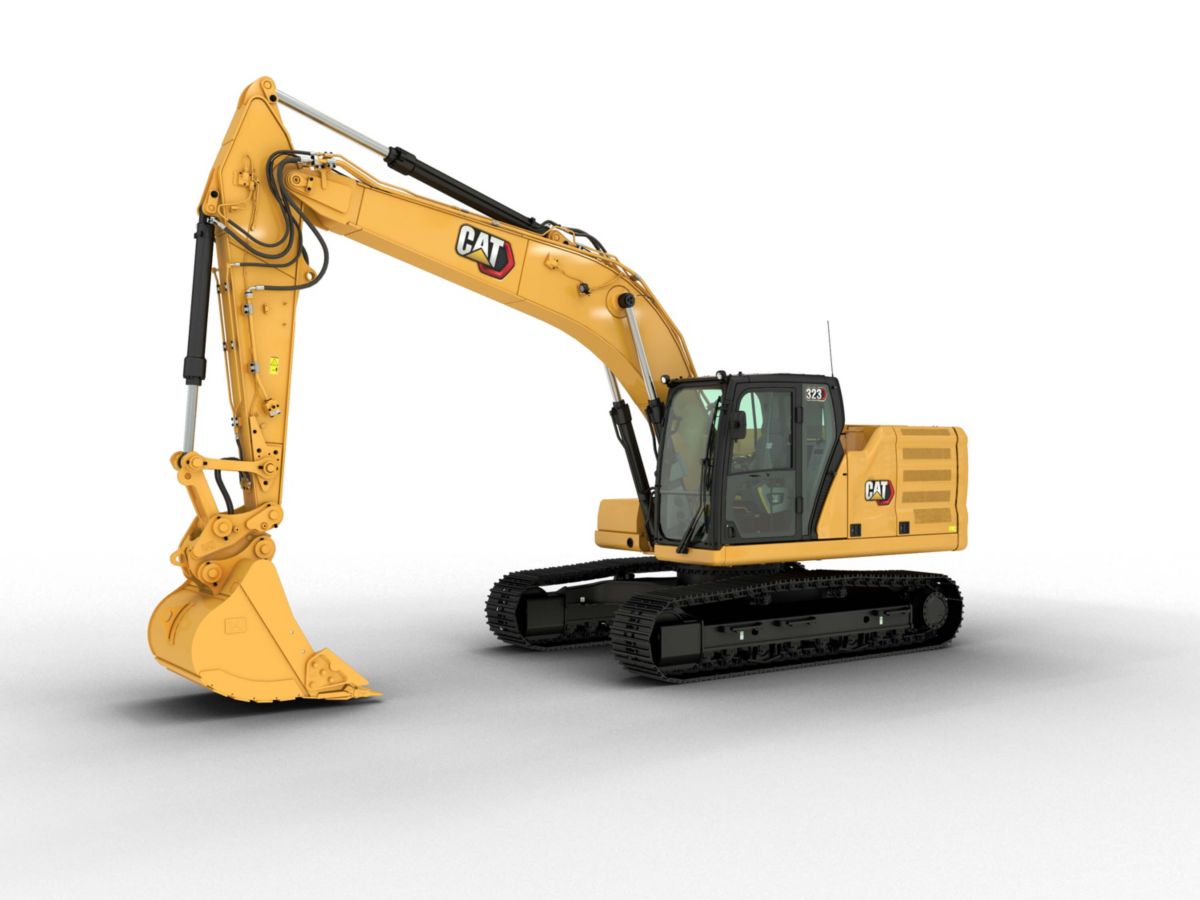Volvo EC220E vs Cat 323 – the most essential battle of the medium excavators in the market. Both these excavators have huge fan following among the construction business owner community. In this article, we will compare the two models based on various specifications and features to help you choose the right one for your project.
Operating Weight
The operating weight of an excavator is a crucial specification that affects its performance and maneuverability. The Volvo EC220E has an operating weight of 22,230 lb (10,080 kg), while the Cat 323 has an operating weight of 25,500 kg (56,200 lb). This means that the Cat 323 is heavier and more stable than the Volvo EC220E, making it better suited for heavy-duty excavation and demolition projects.
Engine
Both excavator models are equipped with powerful engines. The Volvo EC220E has a Volvo D6J engine that delivers a gross power of 129 kW (173 HP). The Cat 323, on the other hand, is powered by a Cat C7.1e TA engine that delivers a gross power of 129 kW (173 HP) and a net power of 128 kW (172 HP). Both engines have six cylinders, but the Cat 323 has a larger displacement of 7.01 L (428 cubic inches) compared to the Volvo EC220E’s 5.7 L (348 cubic inches). Overall, both excavators have powerful engines that can handle tough jobs, but the Cat 323 has a slight edge in terms of displacement and net power.
Swing Speed and Torque
The swing speed and torque of an excavator’s upper structure affect its ability to rotate and lift heavy objects. The Volvo EC220E has a swing speed of 11.1 rpm and a swing torque of 220 ft-lbf (83 kNm), while the Cat 323 has a slightly faster swing speed of 11.25 rpm and a higher swing torque of 300 ft-lbf (82 kNm). This means that the Cat 323 is better suited for jobs that require heavier lifting and faster rotation.
Gradeability and Drawbar Pull
The gradeability and drawbar pull of an excavator are important factors to consider when working on steep slopes or difficult terrain. The Volvo EC220E has a gradeability of 35 degrees (70% grade) and a maximum drawbar pull of 150 lbf (183 kN), while the Cat 323 has a gradeability of 35 degrees (70% grade) and a maximum drawbar pull of 203 kN (45,614 lbf). This means that the Cat 323 has a slight advantage in terms of drawbar pull, making it better suited for heavy excavation and hauling jobs.
Fuel Tank and Fluid Capacities
The fuel tank and fluid capacities of an excavator determine how long it can operate before needing to refuel or add fluids. The Volvo EC220E has a fuel tank capacity of 320 L (85 gal), an engine oil capacity of 25 L (7 gal), a coolant capacity of 35 L (9 gal), a hydraulic tank capacity of 140 L (37 gal), and a DEF tank capacity of 27 L (7 gal). The Cat 323, on the other hand, has a fuel tank capacity of 345 L (86.6 gal), an engine oil capacity of 25 L (6.6 gal), a coolant capacity of 25 L (6.6 gal), a hydraulic tank capacity of 210 L (55.5 gal), and a DEF tank capacity of 20 L (5.3 gal). Overall, the Cat 323 has a larger hydraulic tank capacity, but the Volvo EC220E has a larger fuel tank capacity and DEF tank capacity.
When it comes to excavator operations, fuel and fluid management is a critical aspect that operators need to keep in mind. The fuel tank capacity determines how much fuel an excavator can hold, and how long it can operate before requiring a refill. The larger the fuel tank capacity, the longer the excavator can run without interruption.
Similarly, the engine oil, coolant, and hydraulic fluid are essential fluids that need to be checked and maintained regularly to ensure optimal excavator performance. The Volvo EC220E and the Cat 323 both have a similar engine oil and coolant capacity, but the Cat 323 has a larger hydraulic tank capacity. This means that it can hold more hydraulic fluid, which is crucial for heavy-duty operations that require significant hydraulic power.
Another crucial fluid for modern excavators is DEF, which stands for Diesel Exhaust Fluid. DEF is an emissions control liquid that helps reduce harmful emissions from diesel engines. Both the Volvo EC220E and the Cat 323 have DEF tanks, but the Volvo has a larger capacity. This means that operators of the Volvo excavator can run longer before needing to refill the DEF tank.
In conclusion, when comparing the fuel tank and fluid capacities of excavators, it is essential to consider the specific needs of the operation. Both the Volvo EC220E and the Cat 323 have their strengths and weaknesses in terms of fluid capacities. Operators need to choose the excavator that best meets their specific requirements and can operate efficiently without interruption.
Hydraulic System and Performance
When it comes to hydraulic systems, the Volvo EC220E has a total hydraulic system capacity of 290 liters, with a flow rate of 2×160 liters per minute. The Cat 323, on the other hand, has a hydraulic system capacity of 259 liters, with a flow rate of 2×122 liters per minute. Both machines have powerful hydraulic systems that provide excellent lifting and digging capabilities, with the Volvo EC220E having a maximum digging depth of 6.9 meters and the Cat 323 having a maximum digging depth of 6.68 meters.
Operator Comfort and Safety
Both machines are designed with the operator’s comfort and safety in mind. The Volvo EC220E has an ergonomic cab that provides a comfortable and spacious work environment, with an air-suspension seat, automatic climate control, and a large color display that provides real-time information about the machine’s performance. The cab is also fitted with noise-reducing technology, which helps to reduce the noise level to 69 dB(A).
The Cat 323 also has an operator-friendly cab that features a large, air-suspension seat, automatic climate control, and a 10-inch high-resolution touch screen that provides real-time information about the machine’s performance. The cab is also fitted with noise-reducing technology, which helps to reduce the noise level to 71 dB(A).
Price and Value for Money
When it comes to price and value for money, the Cat 323 is slightly more expensive than the Volvo EC220E. However, both machines provide excellent value for money, with powerful engines, excellent hydraulic systems, and comfortable and safe cabs. The decision between the two machines will ultimately come down to personal preference and specific needs.
Lower noise levels during operation, providing a more comfortable working environment.
Faster cycle times due to the machine’s advanced hydraulic system, allowing for greater productivity on the job site.
The operator’s cab lacks visibility in certain areas.
Some users have reported higher maintenance costs compared to other excavators in its class.
Advanced technology: The Cat 323 is equipped with advanced technology such as Cat Grade Control and Cat Payload, which can improve efficiency and productivity on the job site.
More fuel capacity: The Cat 323 has a fuel tank capacity of 345 L (86.6 gal).
Slightly higher price point compared to some competitors.
The operator’s cab may feel cramped for taller individuals.
Conclusion
In conclusion, both the Volvo EC220E and Cat 323 are excellent medium-sized excavators that offer powerful engines, robust hydraulic systems, and comfortable and safe operator cabs. While the Volvo EC220E has a slightly larger hydraulic system and is slightly less expensive, the Cat 323 offers a larger displacement engine and a slightly higher maximum digging depth. Ultimately, the decision between the two machines will depend on the specific needs of the operator, and both machines are sure to provide excellent value for money.




